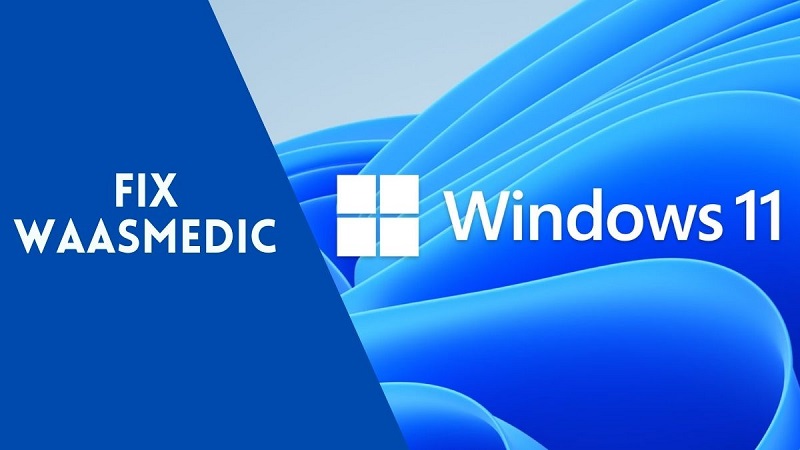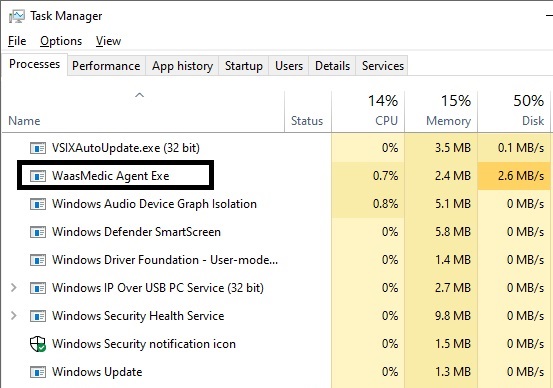WaasMedic.exe (WaasMedic Agent Exe )is a program you may have never heard of before. WaasMedic.exe, for your knowledge, is the Windows Update Medic Service, which was first introduced in Windows 10. The program was created to ensure that your Windows computer receives timely updates, and it automatically fixes any damaged components to ensure that your system receives updates regularly. Because the program runs in the background, some users may experience excessive CPU and disc use on their Windows machine.
WaasMedia.exe: What’s this?
WaasMedia.exe (WaasMedic Agent Exe), as previously stated, is the Windows Update Medic Service, which is an integral component of Windows 10. WaasMedic.exe also fixes processes associated with Windows and its components. WaasMedic.exe interferes and allows them for updates if you turn off the updates of any Windows components or if another software turns them off. The software may consume a lot of RAM and memory in the background, resulting in high disc utilization. This is a problem that affects the majority of low-end PC users. For those, we’ll go through all the measures you can take to solve and cure excessive disc and RAM consumption in Windows 11.
The method is compatible with both Windows 10 and Windows 11 operating systems. Microsoft just unveiled its all-new Windows 11 operating system, which has several UI and aesthetic improvements. The general release of Windows 11 will begin on October 5th, and we sincerely hope that most of our readers will be using it. If you are confused, the approach will work for both Windows 10 and Windows 11. So, you don’t have to be concerned about whether or not the approach will work on your Windows 10 or Windows 11 machine.
Steps to Fix WaasMedic.exe High CPU or Disk Usage on Windows 11/10
Here are a few possible methods to fix or solve the high RAM or disc usage of the WaasMedic Agent Exe file in Windows 11 or 10. It’s a 5 step method using which you can probably fix the high RAM and disc usage of the WaasMedia.exe file.
1] Run system file checker:
First of all, you will need to run a system file checker on your PC. But why so? In Windows, the system file checker checks for missing or damaged files. Also, there’s a good chance that some of the key files necessary for updates were accidentally destroyed or damaged, and the Windows Update Medic Service of WaasMedia.exe was seeking a remedy and working in the background to get things back to normal. So, you may use the program to locate the missing file and manually repair it if any difficulties arise, which will save you a lot of time and prevent WaasMedia.exe from consuming RAM and disc space.
2] Run DISM
DISM, or Deployment Image Servicing and Management, is a procedure that builds on the first by assisting in the repair of damaged files in Windows. You’ll have to fix the file if it was erased manually, but if it was corrupted for any reason, the DISM tool might be quite useful. Your problems should most likely be resolved within these two stages. If the problem persists, you can follow the procedures listed above.
3] Pause Windows Updates for a few days.
If you can’t discover the problem after following these two procedures, there may be some internal issues with the Windows update or the Windows Update Medic Service. So, if your PC isn’t very powerful and you’re having issues with excessive RAM and disc use, the best thing you can do is put the Windows update on hold for a week.
Go to Settings, then to the Windows Update section to halt Windows updates. There will be one menu, which is called Pause Updates. Set the time according to your preferences. It will be adjusted to one week manually, which we also recommend. Your updates will be paused for a few days, weeks, or as long as you want after clicking the pause windows button.
4] Disable WaasMedia.exe temporary
If none of the procedures or methods described above worked for you, you may temporarily disable WaasMedia.exe, which will do nothing except save your RAM and disc storage from excessive use. We don’t advise you to do this, but if you must, do it as a last alternative. You can stop Windows Update Medic Service, but you’ll get an Access Denied warning if you try using Windows Services Manager. So, using Registry Editor, here’s how you can disable it.
Go to the following mentioned path in Windows Registry Editor; now, you will have to change the value of the Start DWORD file to 4 and then set the permission of ket to SYSTEM deny. If you have followed the steps mentioned above properly, then your WaasMedia.exe will be temporarily disabled.
5] Reset Windows PC
WaasMedia.exe’s excessive RAM and disc consumption issues are most likely resolved now. However, if it still consumes a lot of RAM and disc space for whatever reason, you can reset your Windows PC. You may reset your PC in several ways without losing your data or files.
Should I Remove the WaasMedia.exe?
WaasMedic is a Windows agent that simplifies the update process and keeps your PC up to date with the OS. Because it’s a Windows component, you can’t destroy or uninstall it. Disabling it is as simple as editing the registry or using a third-party application. Except if you are having issues with WaasMedic.exe, it is not advised that you remove it or disable it.
With that concluded, what are your thoughts on WaasMedia.exe and whether or not the methods mentioned above to prevent WaasMedia.exe from eating ROM worked for you? Please let us know in the comments section below.




